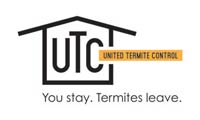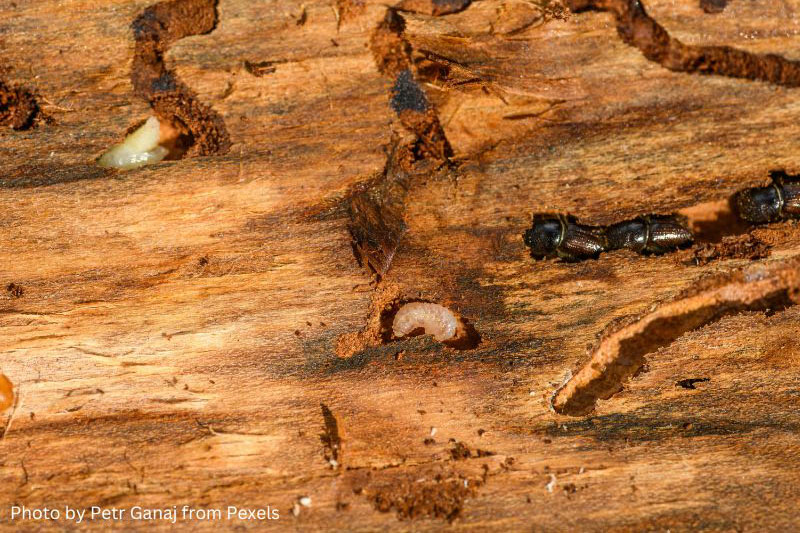The Signs of Termite Infestation
Termites may be small, but their impact on our homes can be massive. These silent destroyers cause billions of dollars of damage every year and the worst part? They can go undetected for years. As homeowners, it’s crucial to be able to recognize the signs of a termite infestation before it’s too late. From the visible evidence to the subtle clues, knowing what to look for can save you thousands in repairs.
In this post, we’ll dive into the tell-tale signs of termite infestation, giving you the knowledge to protect your home and family. Don’t wait until it’s too late to take action against these pests. Get ready to arm yourself with the knowledge needed to spot a termite infestation and ultimately safeguard your biggest investment. The insights in this post will empower you to make informed decisions when it comes to termite prevention and control.
Signs of Termite Infestation
To effectively combat termite infestations, homeowners must first understand the behavior patterns of these destructive pests. Termites are social insects that live in colonies and work together to forage for food sources, with wood being their primary source of nourishment. They are attracted to moisture-rich environments, making damp or poorly ventilated areas of a home particularly vulnerable to infestation. By knowing where termites are likely to congregate, such as near water pipes, leaky faucets, or damaged wood structures, homeowners can focus their inspection efforts on these key areas.
Furthermore, termites build mud tubes to travel through while seeking out food, which are often visible along foundations, walls, or other entry points into the home. By inspecting these tubes regularly and sealing off entry points, homeowners can disrupt termite activity and deter infestations effectively.
- Understanding the life cycle of termites is crucial for early detection and prevention.
- Termites go through distinct developmental stages, from eggs to nymphs to adult workers, soldiers, and swarmers.
- Identifying the presence of termite swarmers is a clear indicator of a mature infestation.
Implementing Effective Termite Control Measures
Prevention is the cornerstone of successful termite control strategies. By incorporating a combination of physical barriers, habitat modification, and monitoring systems, homeowners can create an inhospitable environment for termites and reduce the risks of infestation.
- Maintain proper drainage around the home to prevent water accumulation near the foundation.
- Reduce wood-to-soil contact by storing firewood away from the house.
- Address any leaks or plumbing issues promptly to prevent water damage.
Installing termite baits and monitoring systems is a proactive approach to detecting termites early on before significant damage occurs. Regularly monitoring these bait stations allows homeowners to track termite activity and intervene before an infestation becomes widespread.
Detecting Termites with Early Warning Signs
Detecting termites early can save homeowners from extensive damage and costly repairs. Recognizing the signs of a termite infestation is crucial.
- Mud tubes are one of the most visible indicators. Termites construct these pencil-width tunnels along exterior walls or foundations to protect themselves from predators and maintain moisture while traveling between their colony and food sources. Regularly inspect your home’s perimeter for these tubes, especially in hidden or less-frequented areas.
- Hollow-sounding wood is another warning sign. Termites consume wood from the inside out, leaving a thin veneer on the surface. Tapping on wooden structures, such as beams, floors, or walls, that produce a hollow sound can indicate internal termite damage. Pay attention to areas that sound less solid compared to others.
- Discarded termite wings near windows, doors, or other entry points suggest an established colony. Swarming termites shed their wings after mating, often leaving piles of wings around potential entry points. These wings are typically uniform in size and translucent, resembling fish scales.
Other signs include cracked or bubbling paint and frass (termite droppings) that resemble sawdust. Regular inspections and prompt attention to these signs can prevent significant termite damage, protecting your home’s structural integrity and value. If you suspect termites, contact a pest control professional for a thorough inspection and treatment plan.
Professional Extermination Services for Infestation
When faced with a severe termite infestation, seeking professional extermination services is paramount. Pest control experts possess the knowledge, tools, and experience necessary to effectively eliminate termites and prevent their return. They conduct thorough inspections to identify the extent of the infestation and use targeted treatments to eradicate the pests.
Professionals can apply advanced methods, such as liquid termiticides, baiting systems, and fumigation, ensuring comprehensive control. Additionally, they offer preventative measures and maintenance plans to protect your home from future infestations. Trusting professionals ensures the job is done safely and effectively, preserving your home’s structural integrity and value.
Maintaining Termite-Free Homes with Regular Inspections
Preventing termite infestations involves proactive measures to protect your home from these destructive pests.
Conduct Thorough Checks For Moisture Issues
Termites thrive in moist environments, so it’s essential to inspect your home for leaks in plumbing, roofing, and air conditioning units. Repair any leaks promptly and ensure proper drainage around your home’s foundation. Reducing moisture minimizes the attractiveness of your property to termites.
Invest in Preventive Treatments
Soil treatments and chemical barriers create a protective zone around your home. Soil treatments involve applying termiticides to the soil around your foundation, effectively repelling or killing termites before they can enter your home. Chemical barriers, often placed in the ground, provide long-lasting protection against termites. These treatments can significantly reduce the risk of infestation.
Regularly Maintain Termite Prevention Systems
Bait stations and monitoring devices are essential components of a comprehensive termite management plan. Bait stations attract termites, which then carry the poison back to their colony, gradually eliminating it. Monitoring devices help detect early signs of termite activity, allowing for swift intervention. Regularly check and replenish these systems as needed to ensure ongoing protection.
Implementing these measures helps safeguard your home against termites, preserving its structural integrity and value.
Resolve the Termite Problem on Time
By understanding termite behavior, implementing effective control measures, detecting early warning signs, seeking professional extermination services when needed, and maintaining proactive prevention efforts, homeowners can create a termite-free environment for their homes.
Take action today by applying the expert insights and recommendations provided in this guide to protect your home from termites and ensure lasting peace of mind.
Visit our blog and learn more about pest prevention.

